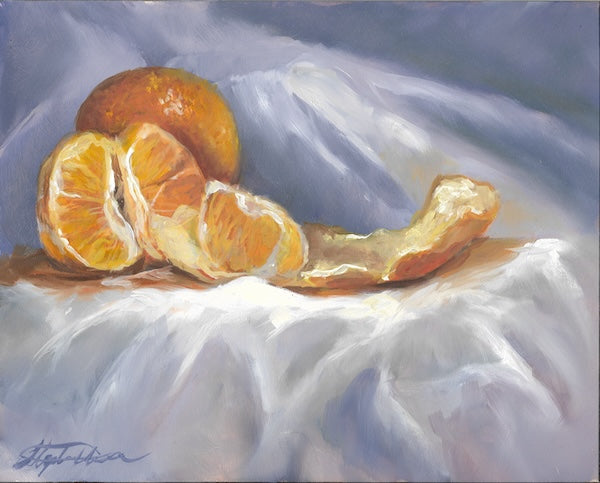Stylish Interior Decor Tips with Oil Paintings for Sale
Stylish Interior Decor Tips with Oil Paintings for Sale
Blog Article
Exploring Everything About Oil Paintings: A Guide to Comprehending Their Appeal and Value
Oil paints have captivated audiences for centuries, using a look into the creative proficiency of various ages. Their abundant background is linked with innovative methods and profound psychological expression. Understanding the products and techniques behind these artworks can enhance gratitude. Furthermore, the marketplace for oil paints offers chances for enthusiasts and investors alike. As one discovers this fascinating world, the inquiry develops: what makes an oil painting absolutely valuable?
The Background of Oil Paint: A Journey Through Time
Oil painting has origins that date back to old times, it really grew during the Renaissance, when musicians uncovered its convenience and rich color possibility. Early instances can be mapped to the 7th century, with methods evolving significantly across cultures. The tool ended up being noticeable in Northern Europe in the 15th century, particularly via the works of artists like Jan van Eyck, that originated its usage for detailed realistic look and lively colors. This period marked a separation from tempera paints, permitting for higher deepness and texture. As oil paint spread, it influenced many musicians, leading to masterpieces by renowned numbers such as Leonardo da Vinci and Rembrandt. The tool's tradition proceeds, shaping the art globe well into modern-day times.
Recognizing Oil Repaints: Materials and Techniques
As musicians discover the globe of oil paints, they run into a varied array of products and strategies that define this tool. The primary elements of oil paint include pigments, which provide color, and drying oils, such as linseed, that bind the pigments and facilitate application. Different additives can customize the paint's texture and drying out time, improving flexibility. Strategies like glazing, where transparent layers are developed, and impasto, which involves using thick paint, permit different aesthetic effects. Additionally, making use of brushes, scheme blades, and also fingers can develop unique structures and surfaces. Understanding these products and techniques makes it possible for artists to fully reveal their creativity and attain the preferred influence in their art work.
The Function of Color in Oil Paintings
Color plays a crucial duty in oil paintings, affecting both aesthetic appeal and psychological vibration. Recognizing color concept fundamentals, consisting of the relationships in between colors, can boost a musician's ability to share state of mind and atmosphere. Furthermore, mastering shade blending techniques permits greater depth and richness in a paint's scheme.

Shade Theory Fundamentals
Understanding color concept is important for musicians dealing with oil paints, as it creates the structure for producing harmonious and aesthetically interesting make-ups. Shade theory incorporates the study of how shades engage, the shade wheel, and the connections between primary, additional, and tertiary colors. Musicians use corresponding shades to enhance contrasts and create focal factors, while analogous colors promote unity and cohesiveness within an item. In addition, the principles of amazing and warm shades affect the perception of depth and room in a paint. Understanding these concepts permits artists to adjust shade properly, leading the visitor's eye and communicating their designated message. Proficiency of shade concept inevitably enhances a musician's ability to communicate emotions and concepts via their job.
Emotional Impact of Color
The psychological impact of shade in oil paintings plays an essential role in just how viewers attach and view with art work. Shades evoke details feelings and moods, affecting the viewer's mood. Cozy shades like oranges and reds can develop a sense of warmth and energy, while amazing tones such as blues and environment-friendlies commonly stimulate peace or self-questioning. Artists tactically select color combinations to improve narrative components, guiding the target market's psychological trip. The saturation and comparison of colors additionally amplify these effects, attracting focus and producing focus. Ultimately, the interplay of shades in oil paints not only enhances their visual appeal however likewise functions as a powerful tool for psychological expression, enriching the customer's experience and analysis.
Shade Mixing Techniques
While lots of facets of oil painting add to the total composition, mastering shade blending strategies is necessary for achieving wanted impacts and depth. Color mixing can be come close to via various techniques, including the subtractive and additive procedures. Additive mixing entails combining shades of light, while subtractive blending counts on pigments, where colors blend to develop brand-new shades. Musicians typically use a restricted palette to develop harmonious jobs, comprehending the connections in between key, second, and tertiary shades. Techniques such as glazing and scumbling better enhance depth and luminance. By skillfully mixing shades, an artist can evoke feelings, develop focal factors, and accomplish a sense of realism, inevitably raising the paint's visual and psychological effect.
Famous Oil Painters and Their Iconic Works

Famous for their mastery of color and technique, oil painters have created a few of one of the most well known artworks in background. Prominent artists like Vincent van Gogh mesmerized target markets with his stirring brushwork in "Starry Night," while Claude Monet's "Perception, Sunrise" prepared for Impressionism. Leonardo da Vinci's "Mona Lisa" stays an enduring icon of artistic genius, showcasing his skill in catching human expression. On the other hand, Rembrandt's "The Night Watch" illustrates his cutting-edge use of light and darkness. Various other significant numbers include Pablo Picasso, who transformed modern art with his bold trial and error in jobs like "Les Demoiselles d'Avignon," and Georgia O'Keeffe, whose vivid depictions of blossoms and landscapes assisted specify American modernism. Each musician's special design contributed significantly to the oil paint landscape.
How to Evaluate the Quality of an Oil Paint
Examining the top quality of an oil paint involves a careful analysis of workmanship strategies, as well as an evaluation of shade and make-up. Observing brushwork, layering, and the application of paint can expose the artist's ability level. Furthermore, the interplay of shades and the total setup of elements contribute significantly to the paint's aesthetic value.
Assessing Workmanship Methods
A precise assessment of workmanship techniques is necessary for establishing the quality of an oil painting. Critics should first examine the application of paint; click here thick, distinctive brushstrokes may suggest a knowledgeable hand, while extremely consistent applications could show a lack of deepness. oil paintings for sale. The layering strategy is also crucial; the visibility of lusters and varied density can improve luminosity and intricacy. In addition, the top quality of the products used, such as the canvas and pigments, plays a considerable duty in resilience and total aesthetic. Interest to information in elements like sides and shifts in between colors mirrors the artist's dedication to their craft. Eventually, these techniques add to the painting's emotional impact and market value, acting as signs of the artist's skill and intent
Evaluating Color and Composition
While assessing the top quality of an oil painting, one should focus on the interplay of shade and make-up, as these aspects are basic to the artwork's total effect. Color options can establish and evoke emotions mood; consequently, the artist's palette should be analyzed for harmony and comparison. A healthy structure directs the audience's eye and produces a feeling of unity. Artists typically utilize strategies like the rule of thirds or leading lines to boost aesthetic interest. In addition, using light and shadow can add deepness, improving the three-dimensionality of the paint. Ultimately, an effective oil paint marries color and structure, engaging the audience and welcoming a much deeper gratitude of the musician's vision and method.
Caring for and Preserving Oil Paintings
Appropriate treatment and conservation of oil paintings is vital for maintaining their stability and long life. To shield these artworks, it is important to present them away from direct sunlight, which can create fading and discoloration. Keeping a secure setting with controlled temperature level and humidity additional aids in stopping damages. Cleansing should be done gently making use of a soft, dry cloth, avoiding any type of severe chemicals that could damage the paint or varnish. Regular assessments for signs of wear and tear, such as splitting or flaking, are advisable. When moving or storing oil paints, correct extra padding and framework are necessary to avoid physical injury. Inevitably, persistent care adds to the aesthetic charm and value of oil paints over time.
The Market for Oil Paintings: Accumulating and Investing
Comprehending the market dynamics for oil paintings is essential for collection agencies and investors alike. The value of these artworks is influenced by numerous elements, including the musician's reputation, historic significance, and existing patterns. Collectors usually seek items that reverberate personally while thinking about prospective admiration in worth. Galleries and auctions function as primary locations for purchasing and marketing, with costs rising and fall based on demand and rarity. Spending in oil paintings calls for research right into the market, as well as an understanding of credibility and provenance. Furthermore, arising artists may provide opportunities for considerable returns, while established names can regulate high prices. On the whole, a strategic technique to gathering can produce both aesthetic pleasure and monetary benefits.

Frequently Asked Inquiries
What Are the Environmental Effects of Oil Paint Products?
The environmental influences of oil painting materials include the launch of unstable organic compounds (VOCs), unsafe waste generation, and resource extraction for pigments. These variables contribute to air pollution and eco-friendly degradation, elevating concerns among environmentally mindful artists and consumers.
Just How Do Various Canvases Impact Oil Painting Outcomes?
Different canvases affect oil paint results substantially. Absorbency, surface, and structure top quality can change paint application, drying times, and color vibrancy. Artists frequently choose certain canvases to accomplish wanted impacts and enhance their creative expression.
Can Oil Paintings Be Recovered if Harmed?
Oil paintings can undoubtedly be restored if damaged. Expert conservators use numerous methods to repair rips, clean surface areas, and address staining, making certain that the art work keeps its initial beauty and worth for future generations.
What Are the Indicators of an Original Oil Painting?
The indications of an original oil painting consist of noticeable brush strokes, structure variants, and an irregular canvas weave (oil paintings for sale). Additionally, credibility might be validated with provenance, trademarks, and the presence of a varnish layer distinct to oil tools
Just How Has Innovation Influenced Modern Oil Paint Techniques?
Modern technology has actually considerably influenced modern oil paint methods by presenting electronic devices for preparation, enhanced materials for texture and longevity, and on-line platforms for sharing and offering art, thus expanding artists' creative possibilities and target market get to. Oil paint has roots that date back to ancient times, it absolutely flourished throughout the Renaissance, when musicians uncovered its versatility and rich color potential. The psychological influence of shade in oil paints plays an essential role in how visitors link and view with artwork. While numerous aspects of oil paint contribute to the general composition, understanding shade blending methods is important for attaining desired impacts and depth. Evaluating the high quality of an oil painting entails a cautious evaluation of craftsmanship methods, as well as an analysis of shade and composition. While evaluating the top quality of an oil paint, one have to focus on the interaction of shade and make-up, as these components are essential to the art work's overall influence.
Report this page